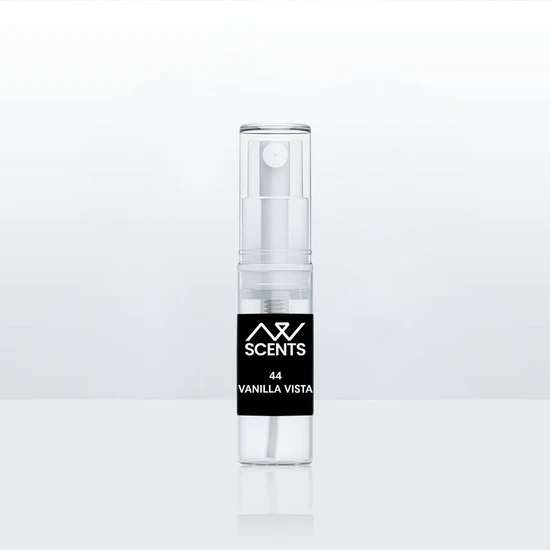Vanilla, with its warm and comforting aroma, has long been cherished as a fragrance and flavor. It’s no wonder that it has inspired a multitude of creations across various artistic and sensory realms. In this blog, we’ll delve into the world of vanilla, exploring its history, cultural significance, and the myriad ways in which it has influenced our lives, from perfumes to pastries. Join us on a scented reverie through the captivating diorama of vanilla’s inspiration.
The Vanilla Odyssey
The story of vanilla begins in the lush, tropical regions of Mexico, where the Totonac people were among the first to cultivate and use this remarkable orchid. They believed that the vanilla orchid was a gift from the gods and used it as an offering in their rituals. The word “vanilla” itself comes from the Spanish word “vainilla,” meaning “little pod,” referring to the long, slender pods that house the tiny, aromatic vanilla beans.
Vanilla’s journey didn’t stop in Mexico; it embarked on a voyage of exploration and colonization. Spanish conquistadors, notably Hernán Cortés, encountered vanilla during their travels to the New World in the 16th century. They were intrigued by its scent and brought it back to Europe, where it quickly became a favorite among the aristocracy. Vanilla’s allure continued to spread across the globe, reaching the Indian Ocean islands, Madagascar, and beyond.
The Allure of Vanilla in Perfumery
Inspired By Vanilla Diorama role as an olfactory muse cannot be overstated. In the world of perfumery, it plays a central and captivating role. The sweet and comforting aroma of vanilla is often referred to as “nature’s aphrodisiac.” It’s the base note in many iconic perfumes, adding depth, warmth, and sensuality to countless fragrances.
Vanilla’s versatility as an ingredient in perfumery allows it to mingle with a wide range of scents, from the bright and fresh to the deep and woody. It can be the star of the show in a fragrance or a supporting character, enhancing and harmonizing other notes. The combination of vanilla with floral notes, such as jasmine or rose, creates a romantic and enchanting aura, while pairing it with spices like cinnamon or clove adds a touch of intrigue.
One iconic fragrance that relies on vanilla’s charm is Shalimar by Guerlain. Created in the 1920s, it’s a symphony of vanilla, iris, and amber, evoking a sense of timeless luxury. Additionally, Thierry Mugler’s Angel, known for its bold and distinctive scent, features a prominent note of vanilla that adds a sweet and ethereal quality.
The Vanilla Spectrum in Gastronomy
Vanilla is not limited to the world of perfumery; it has also left an indelible mark on the culinary world. When we think of vanilla in the context of food, our minds often wander to delectable desserts and sweet treats. Vanilla extract, derived from the beans of the vanilla orchid, is a common pantry staple in kitchens worldwide.
The rich, aromatic flavor of vanilla enhances a wide array of dishes. From classic vanilla ice cream to warm, comforting vanilla custard, and even in savory dishes like vanilla-infused sauces for poultry and seafood, this beloved ingredient offers a broad spectrum of gastronomic delights.
One dessert that stands out as a masterpiece of vanilla is the Crème Brûlée. This French classic combines the smooth and creamy custard infused with vanilla, topped with a crisp layer of caramelized sugar. The contrast of flavors and textures is a testament to vanilla’s ability to elevate simple ingredients into a culinary masterpiece.
Vanilla also plays a vital role in the world of baking. Vanilla-scented cakes, cookies, and pastries are beloved by many. Just a few drops of pure vanilla extract can transform a plain recipe into a fragrant and flavorful delight.
Vanilla in Culture and Tradition
Beyond its role in perfumery and gastronomy, vanilla holds cultural significance in various parts of the world. In Madagascar, for example, vanilla is not just a flavor; it’s a way of life. Madagascar is one of the largest vanilla-producing regions globally, and the vanilla trade sustains many local communities. The people of Madagascar have embraced vanilla as part of their identity, and its cultivation and export have become an integral part of their culture.
Vanilla is also a symbol of love and affection. In Victorian England, the language of flowers was a popular form of communication. Different flowers and scents conveyed different emotions, and vanilla represented sweetness and sentimentality. This tradition continues today, with vanilla being a common note in romantic perfumes and candles.
Vanilla’s Timeless Appeal
The appeal of vanilla is timeless. It transcends generations and geographical boundaries. Its warmth and sweetness bring comfort, joy, and sensuality to our lives. Whether you encounter it in a luxurious perfume, a decadent dessert, or a cultural ritual, vanilla’s charm is undeniable.
As we traverse the scented reverie of vanilla’s inspiration, we discover a world rich in history, culture, and sensory delight. From the ancient rituals of the Totonac people to the modern-day creations in perfumery and cuisine, vanilla continues to captivate and inspire us. It is a testament to the enduring power of nature’s gifts and the boundless creativity of humanity.
Conclusion
The scented reverie of vanilla’s inspiration is a journey that takes us through time and across the globe. From its origins in the rainforests of Mexico to its prominent role in perfumery, gastronomy, and culture, vanilla’s influence is profound and enduring. Its ability to evoke feelings of comfort, sensuality, and nostalgia makes it a cherished and timeless fragrance.
https://tefwins.com/



